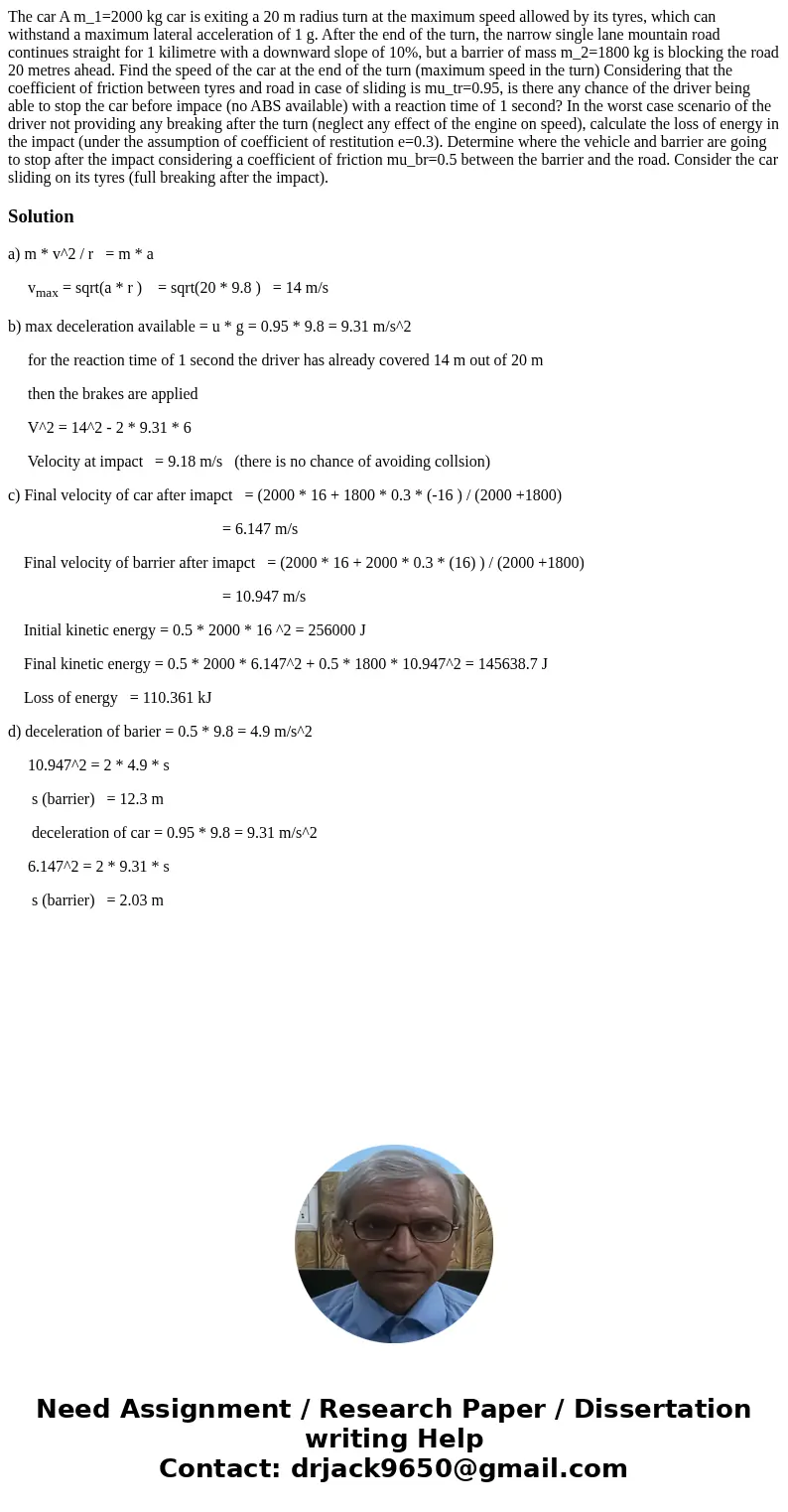The car A m_1=2000 kg car is exiting a 20 m radius turn at the maximum speed allowed by its tyres, which can withstand a maximum lateral acceleration of 1 g. After the end of the turn, the narrow single lane mountain road continues straight for 1 kilimetre with a downward slope of 10%, but a barrier of mass m_2=1800 kg is blocking the road 20 metres ahead. Find the speed of the car at the end of the turn (maximum speed in the turn) Considering that the coefficient of friction between tyres and road in case of sliding is mu_tr=0.95, is there any chance of the driver being able to stop the car before impace (no ABS available) with a reaction time of 1 second? In the worst case scenario of the driver not providing any breaking after the turn (neglect any effect of the engine on speed), calculate the loss of energy in the impact (under the assumption of coefficient of restitution e=0.3). Determine where the vehicle and barrier are going to stop after the impact considering a coefficient of friction mu_br=0.5 between the barrier and the road. Consider the car sliding on its tyres (full breaking after the impact).
a) m * v^2 / r = m * a
vmax = sqrt(a * r ) = sqrt(20 * 9.8 ) = 14 m/s
b) max deceleration available = u * g = 0.95 * 9.8 = 9.31 m/s^2
for the reaction time of 1 second the driver has already covered 14 m out of 20 m
then the brakes are applied
V^2 = 14^2 - 2 * 9.31 * 6
Velocity at impact = 9.18 m/s (there is no chance of avoiding collsion)
c) Final velocity of car after imapct = (2000 * 16 + 1800 * 0.3 * (-16 ) / (2000 +1800)
= 6.147 m/s
Final velocity of barrier after imapct = (2000 * 16 + 2000 * 0.3 * (16) ) / (2000 +1800)
= 10.947 m/s
Initial kinetic energy = 0.5 * 2000 * 16 ^2 = 256000 J
Final kinetic energy = 0.5 * 2000 * 6.147^2 + 0.5 * 1800 * 10.947^2 = 145638.7 J
Loss of energy = 110.361 kJ
d) deceleration of barier = 0.5 * 9.8 = 4.9 m/s^2
10.947^2 = 2 * 4.9 * s
s (barrier) = 12.3 m
deceleration of car = 0.95 * 9.8 = 9.31 m/s^2
6.147^2 = 2 * 9.31 * s
s (barrier) = 2.03 m

 Homework Sourse
Homework Sourse